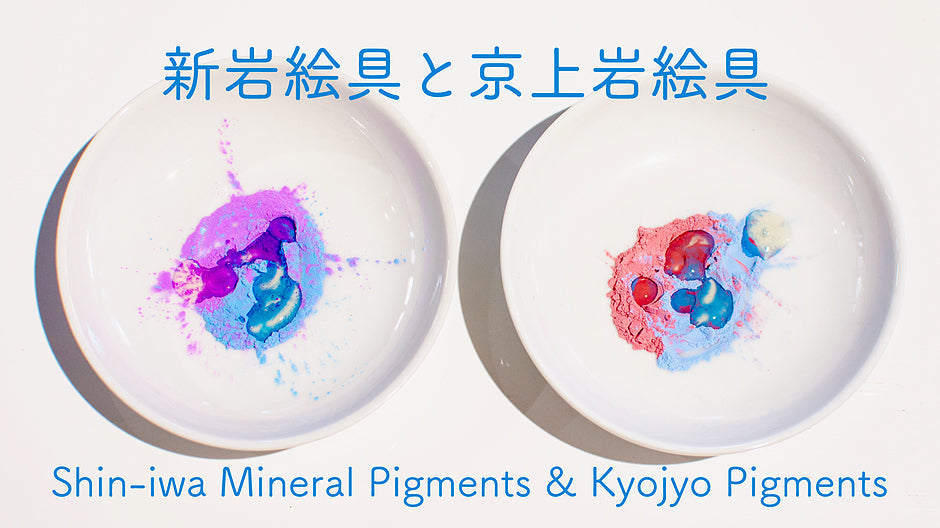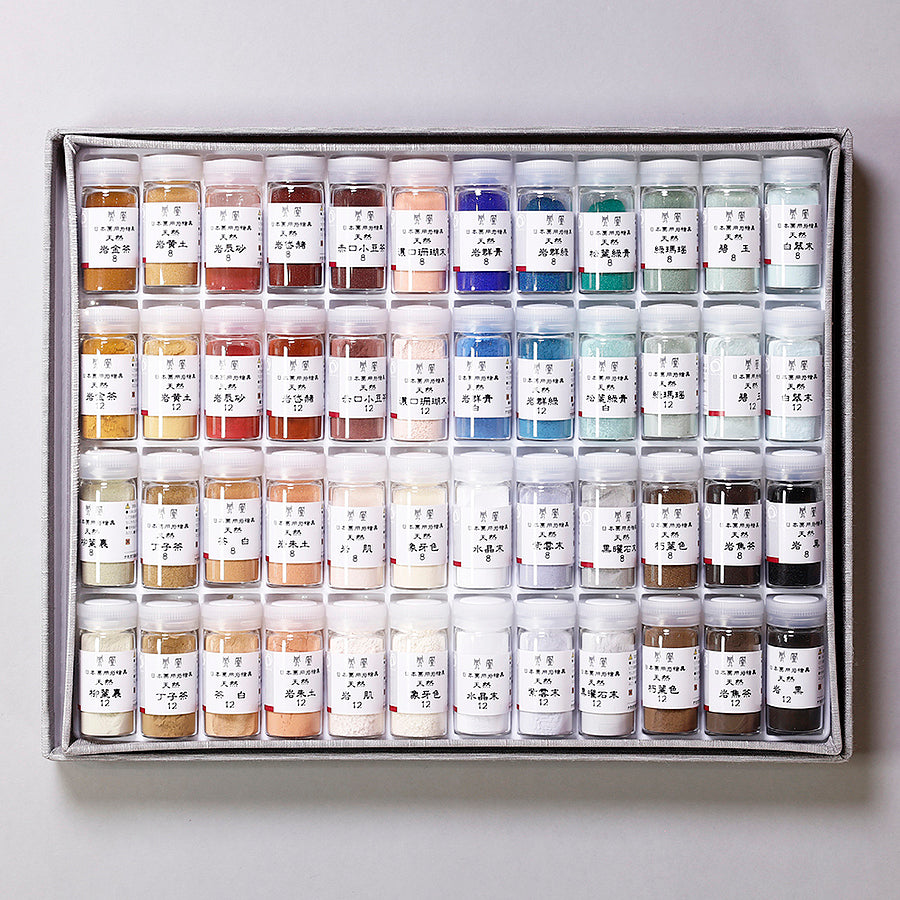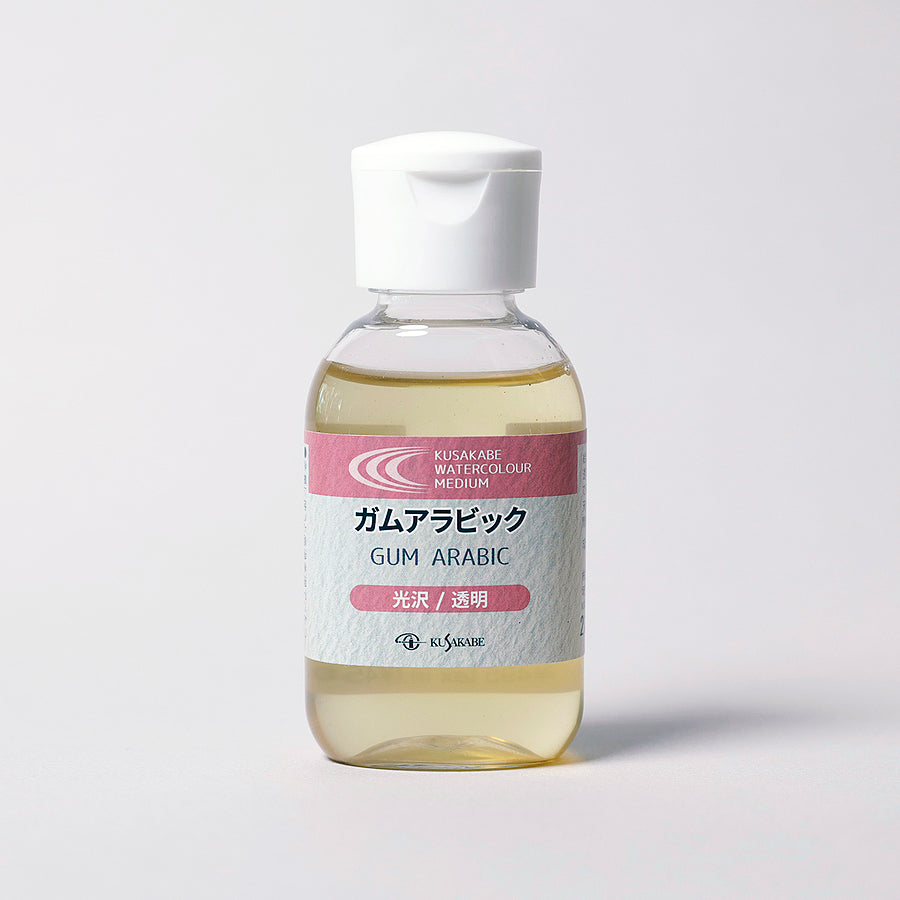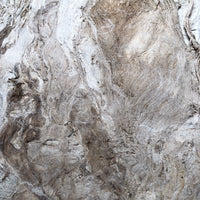Mineral pigments can be classified into two types: natural mineral pigment, which is made from pulverized natural materials such as ore and soil; and artificial mineral pigment, which is produced from man-made materials. In particular, there are many types of artificial mineral pigments and some of you may not know or can’t even tell the difference between them.
Natural mineral pigments are often more expensive and scarce than other pigments, while some of the colors are getting more difficult to produce these days.
Since they are derived from natural materials, resources and color variations are limited, therefore, artificial mineral pigments were created as an alternative.
Artificial mineral pigments are made by mixing vitreous (glaze) and colored powders (pigments), later melting them at high temperatures and cooling them to form blocks of color, which are then ground and divided into groups according to the particle size.
The use of colored powders has made it possible to create a wide range of color tones different from natural mineral pigments.
In this article, I would like to explain the characteristics and differences between two types of artificial mineral pigments, which names are Shin-iwa mineral pigments and Kyojyo pigments.
A type of artificial mineral pigment that is available in most colors in PIGMENT TOKYO.
Vitreous (glaze) is one of the main materials of the Shin-iwa mineral pigments that also contain lead as a component.
【Colors】About 155 colors (as of October 2021)
【Particle Size】Available in 10 different coarseness/tones from No. 5 (coarsest / dark) to Byaku (finest / light)
【Characteristics】
・Excellent durability.
・A wide range of color tones.
・The price varies depending on the color.
・The finer particles diffusely reflect the light that appears lighter color to our eyes and creates a gradation from dark to light when all the different particle size pigments are lined up from coarse to fine.
The main feature of Shin-iwa mineral pigments is the wide range of color hues and their saturation that is impossible to find in natural mineral pigments.
The wide variety of colors and vivid tones make it the most popular type of mineral pigments carried by PIGMENT TOKYO.
Moreover, the Shin-iwa mineral pigments are available in sets as well. These pigment sets are highly recommended to those who want to have a variety of colors with small portions.
Lead-free artificial mineral pigments that do not contain lead as a component in the vitreous (glaze).
【Colors】About 13 colors (as of October 2021)
【Particle Size】Available in 10 different coarseness/tones from No. 5 (coarsest / dark) to Byaku (finest / light)
【Characteristics】
・Excellent weather resistance and preventing deterioration.
・No environmental pollution caused by lead.
・The finer particles diffusely reflect the light that appears lighter color to our eyes and creates a gradation from dark to light when all the different particle size pigments are lined up from coarse to fine.
・The specific weight of all Kyojyo pigments is the same, therefore, it is possible to mix the colors without causing separation as long as they are in the same coarseness.
Kyojyo pigments are a new type of mineral pigment produced through collaborative research and development between Nakagawa Gofun Enogu Company and Kyoto Prefectural Technology Center for Small and Medium Enterprises in response to the environmental pollution problem caused by lead-based artificial mineral pigments.
Lead reacts with sulfur components and environmentally polluting gasses, causing deterioration and discoloration.
It was born upon the need for a new artificial mineral pigment, not only for environmental protection but also for protecting artworks.
Although the number of colors is limited, the colors come in different nuances of richness and beauty compared to the Shin-iwa mineral pigments.
Furthermore, Kyojyo pigments also produce a rich variation of colors through ten different particle sizes that create values and shades of the colors same as Shin-iwa pigments and natural mineral pigments.
Most mineral pigments have different specific weights depending on the colors, so even with the same particle size, the difference in weight can make it difficult to mix colors and cause heavier pigments to sink.
For this reason, mineral pigments tend to be applied as layers to achieve the particular colors without mixing them and it is a technique to give a profound feeling.
However, the specific weight of Kyojyo pigment is uniform, so if the particle sizes are the same, you can mix different colors without causing color separation.
Let me show you a comparison of Shin-iwa mineral pigments and Kyojyo pigments here.
Kyojyo Pigments

【Art Materials Used】
Color : Kyojyo Turquoise Blue 12, Kyojyo Benifujimurasaki 12
Medium : Gum Arabic Medium
Substrate : Bamboo Washi for Watercolor Art Pad
As you can see, the Kyojyo pigments blended nicely, although the color separation still slightly appeared on the plate. For the next sample, I used a lighter tone to make it easier to see the density of the colors.
Shin-iwa (Artificial) Mineral Pigments

【Art Materials Used】
Color: Shin-iwa Mizuasagi 12, Shin-iwa Iwamomo 12
Medium: Gum Arabic Medium
Substrate: Bamboo Washi for Watercolor Art Pad

【Art Materials Used】
Color: Shin-iwa Bigunjo 12, Shin-iwa Sakurairo 12
Medium: Gum Arabic Medium
Substrate: Bamboo Washi for Watercolor Art Pad
The two images above show how it turned out when two colors of mineral pigments were mixed. When applied immediately after kneading, they mixed relatively well.
However, once I left the mixture for a while, Shin-iwa pigments tend to separate and create two layers of the colors.

【Art Materials Used】
Right Color : Kyojyo Turquoise Blue 12, Kyojyo Benifujimurasaki 12
Left Color : Shin-iwa Mizuasagi 12, Shin-iwa Iwamomo 12
Please note that this is just an example and the results will vary depending on the combination of pigments' specific gravity, amount ratio and the medium used.
However, even if you mix the pigments with different specific weights, it might create a unique look that matches your painting style.
In the following video, you can watch the color mixing process.
【PIGMENT Selection】Kyojyo pigments
The desire for beauty and color, and the development of human wisdom and technology, have produced a new kind of mineral pigments that may enrich the artists' life.
Perhaps this may help you discover a new world of color in your journey!
Last but not least, you can find a painting that used both Shin-iwa pigments and Kyojyo pigments displayed at PIGMENT TOKYO.

【Articles】My Personal Favorite “ Mineral Pigment”
This previous article featured Margarita Serizawa, a PIGMENT TOKYO art materials expert who mainly creates paintings using Japanese art materials.
It also introduces the artist's use of art materials, including the production process and how she uses mineral pigments.
Serizawa's solo exhibition will start in October 2021 and she will be showing some of her new artworks. By seeing the works in person, you would appreciate the beauty and appeal of each type of mineral pigment.
The artist herself will be around in the gallery, so feel free to say hi if you ever get to visit the exhibition.
【Exhibition Info】
Margarita Serizawa Solo Exhibition "Serenity"
Place Art Space Rashinban
Date and Time October 11 (Mon) - 16 (Sat) 2021, 11:00-19:00 (until 17:00 on the last day)
Address Kyoei Building 2F, 3-5-3 Kyobashi, Chuo-ku, Tokyo
TEL 03-3538-0160
Serizawa Margarita
Instagram https://www.instagram.com/margaritaserizawa/
*This exhibition has ended.

Reference
・Nakagawa Gofun Enogu Co. About Paints - Kyojyo Pigments
http://nakagawa-gofun.co.jp/english/begin/kyojo.html
・Nakagawa Gofun Enogu
http://nakagawa-gofun.co.jp/english/index.html
Translated by Atsumi Okano
PIGMENT TOKYO Art Materials Expert


















